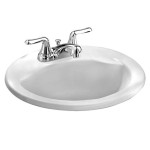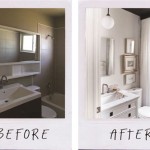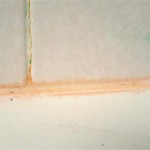Can You Drink Water From a Bathroom Tap in Scotland?
The question of whether it is safe to drink water from a bathroom tap in Scotland is a common one, often arising from concerns about water quality and plumbing configurations. The simple answer is generally yes, the water from a bathroom tap in Scotland is safe to drink, provided certain conditions are met. This article will delve into the details, explaining the Scottish water supply system, potential contaminants, and factors influencing the potability of bathroom tap water.
Scotland adheres to stringent water quality standards set by the Drinking Water Quality Regulator for Scotland (DWQR). This regulator ensures that Scottish Water, the public utility responsible for providing drinking water, maintains a high level of water quality throughout its network. The water treated by Scottish Water originates from various sources, including reservoirs, lochs, and rivers. It undergoes rigorous treatment processes, including filtration, disinfection (typically with chlorine or chloramine), and pH correction to ensure it meets the legal standards for drinking water. These standards cover a wide range of parameters, including microbiological contaminants (bacteria, viruses), chemical contaminants (lead, pesticides), and aesthetic parameters (taste, odour, colour).
The water supplied by Scottish Water is considered safe to drink at the point of entry into a property. However, the quality of the water can be affected by the internal plumbing of a building. This is where the question of drinking from a bathroom tap becomes more nuanced. The primary concern lies in the potential for contamination within the internal plumbing system, particularly in older buildings with aging pipes.
Factors Affecting Water Quality in Internal Plumbing
Several factors can compromise the quality of water within a building's plumbing system. Understanding these potential sources of contamination is crucial in determining the safety of drinking water from a bathroom tap.
One of the most significant concerns is the presence of lead pipes. Older buildings, particularly those built before the 1970s, may have lead pipes supplying water to the taps. Lead is a neurotoxin, and even low levels of lead exposure can be harmful, especially to children and pregnant women. Lead can leach into the water from the pipes, particularly if the water is acidic or has been standing in the pipes for an extended period. Scottish Water has been actively replacing lead pipes in its network, but the responsibility for replacing lead pipes within a property typically falls on the homeowner.
Another potential issue is the presence of stagnant water. If a tap has not been used for a prolonged period, the water sitting in the pipes can become stagnant and potentially harbour bacteria. Stagnant water may also dissolve metals from the pipes, altering the taste and quality of the water. This is particularly relevant for infrequently used bathroom taps, such as those in guest bathrooms or holiday homes.
Furthermore, cross-connections between potable and non-potable water supplies can pose a risk. Although less common in residential properties, cross-connections can occur if a pipe carrying contaminated water, such as from a toilet or a heating system, is connected to a pipe carrying drinking water. This can lead to the backflow of contaminated water into the drinking water supply, posing a serious health hazard. Building regulations are in place to prevent cross-connections, but they can still occur in older buildings with poorly maintained plumbing systems.
Finally, the materials used in the plumbing fixtures themselves can affect water quality. Some older taps and fittings may contain lead or other materials that can leach into the water. Newer fixtures are generally made from safer materials, but it is still important to ensure that all plumbing components are of a suitable quality and comply with relevant standards.
Assessing the Risk and Taking Precautions
Given the potential risks associated with drinking water from a bathroom tap, it is important to assess the situation and take appropriate precautions. One of the first steps is to determine the age and material of the plumbing system. If the building is old and the pipes are likely to be made of lead, it is advisable to have the water tested for lead contamination. Scottish Water offers a free lead pipe replacement scheme in certain circumstances, and private testing services are also available.
If the tap has not been used for a while, it is recommended to flush the tap for several minutes before drinking the water. This will help to remove any stagnant water and reduce the concentration of any contaminants that may have leached into the water. The longer the tap has been unused, the longer it should be flushed.
Another precautionary measure is to use a filter jug or tap filter. These filters can remove various contaminants from the water, including lead, chlorine, and sediment. Filter jugs are a relatively inexpensive option, while tap filters provide filtered water on demand. It is important to choose a filter that is certified to remove the specific contaminants of concern.
Regular maintenance of the plumbing system is also essential. This includes checking for leaks, replacing worn-out fixtures, and ensuring that there are no cross-connections between potable and non-potable water supplies. If any plumbing work is carried out, it is important to use qualified plumbers who are familiar with the relevant building regulations.
In cases where there are concerns about the safety of the water, it is always best to err on the side of caution. If the water looks, smells, or tastes unusual, it should not be drunk. Boiling the water can kill many types of bacteria and viruses, but it will not remove chemical contaminants such as lead. Therefore, boiling is not a substitute for addressing the underlying cause of the contamination.
It's important to note that the aesthetic qualities of water do not always indicate its safety. Water that is clear and odourless can still contain harmful contaminants. Conversely, water that has a slight taste or odour may still be safe to drink.
Specific Considerations for Bathroom Taps
Bathroom taps present some specific considerations that are not necessarily applicable to kitchen taps. While the water supplied to both types of taps originates from the same source, the usage patterns and potential for cross-contamination can differ.
Bathroom taps are often used less frequently than kitchen taps, particularly for drinking purposes. This can lead to a greater accumulation of stagnant water in the pipes. As a result, it is particularly important to flush bathroom taps thoroughly before drinking the water, especially if they have not been used for a while.
Another concern is the proximity of bathroom taps to potential sources of contamination. Toilets, sinks, and showers are all potential sources of bacteria and other contaminants. While modern plumbing systems are designed to prevent backflow, there is always a risk of contamination if the plumbing is not properly maintained or if there is a fault in the system. Therefore, it is important to ensure that all plumbing fixtures in the bathroom are in good working order and that there are no leaks or cross-connections.
The type of tap itself can also influence water quality. Older taps may contain internal components that can corrode over time, releasing contaminants into the water. Newer taps are generally made from more durable and corrosion-resistant materials, but it is still important to choose a tap that is certified to meet relevant safety standards.
In some older properties, the bathroom tap may be connected to a storage tank in the attic. This can further increase the risk of contamination, as the water in the tank can become stagnant or contaminated with debris. If the bathroom tap is connected to a storage tank, it is advisable to have the tank inspected and cleaned regularly.
In summary, while the water supplied by Scottish Water is generally safe to drink, the quality of water from a bathroom tap can be affected by various factors related to the internal plumbing system. It is important to assess the risk, take appropriate precautions, and maintain the plumbing system to ensure that the water is safe to drink. If there are any concerns about the safety of the water, it is always best to err on the side of caution and seek professional advice.

Is It Safe To Drink Water From The Bathroom Tap Glasgow Live
People Are Only Just Discovering Why You Shouldn T Drink Water From The Bathroom Tap

Can You Drink Tap Water In Scotland The Facts Revealed Out About
People Are Only Just Discovering Why You Shouldn T Drink Water From The Bathroom Tap
People Are Only Just Discovering Why You Shouldn T Drink Water From The Bathroom Tap

Can You Drink Scottish Tap Water A Guide To Treatment

Why You Should Never Drink Water From The Bathroom Tap Daily Mail

Why You Should Never Drink Water From The Bathroom Tap Daily Mail
Drinking Water From Your Bathroom Could Be Bad For Health

Is It Safe To Drink Bathroom Tap Water
Related Posts







